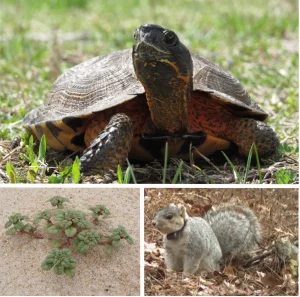
Delaware’s Bold Move: A 10-Year Wildlife Conservation Plan Unveiled
The Delaware Department of Natural Resources and Environmental Control (DNREC) has recently introduced an ambitious 10-year wildlife conservation plan, identifying over 1,000 species in need of protection. This initiative, known as the Delaware Wildlife Action Plan (DEWAP), aims to safeguard not only wildlife but also vital habitats across the state. The significance of this plan cannot be overstated; it is a crucial step towards preserving biodiversity in Delaware, an area rich in both flora and fauna.
At the heart of the DEWAP is a comprehensive list of Species of Greatest Conservation Need (SGCN), which includes notable native species like the Wood Turtle and the Delmarva Fox Squirrel. The plan also brings attention to more than 300 plant species that are essential components of the ecosystem yet face threats from habitat loss and climate change. With Delaware’s designation as a region of critical conservation need, this move is a proactive approach to halt declining populations and ensure the survival of these vulnerable species.

The DEWAP emphasizes collaboration among various stakeholders including state agencies, local communities, and non-profit organizations. This collaborative effort is essential in gathering public input, as DNREC encourages community participation through upcoming public meetings and feedback opportunities. Such engagement ensures that the plan reflects collective concerns and insights from diverse groups across Delaware.
Despite being a small state, Delaware's wildlife is incredibly diverse, playing a key role in the Northeast's ecological landscape. By addressing the needs of at-risk species, the DEWAP is not only a benefit for wildlife but also enhances the quality of life for residents through the promotion of healthy ecosystems. This initiative fosters opportunities for outdoor recreation, education, and responsible stewardship of natural resources, aligning with DNREC's broader mission to protect public health and the environment.
The challenge, however, remains in the implementation of the plan. As public comments are invited and revisions are still being made, the sense of urgency grows. Time is of the essence to preserve the delicate balances within Delaware’s habitats. It will be crucial for both the public and the authorities to work hand-in-hand to ensure this plan is executed effectively.
In conclusion, Delaware’s new Wildlife Action Plan marks a pivotal moment in the state’s commitment to conservation. As we look forward to the final draft and eventual execution of this plan, we encourage residents to engage actively in the process. What are your thoughts on this significant move towards wildlife conservation? Share your opinions and join the conversation!